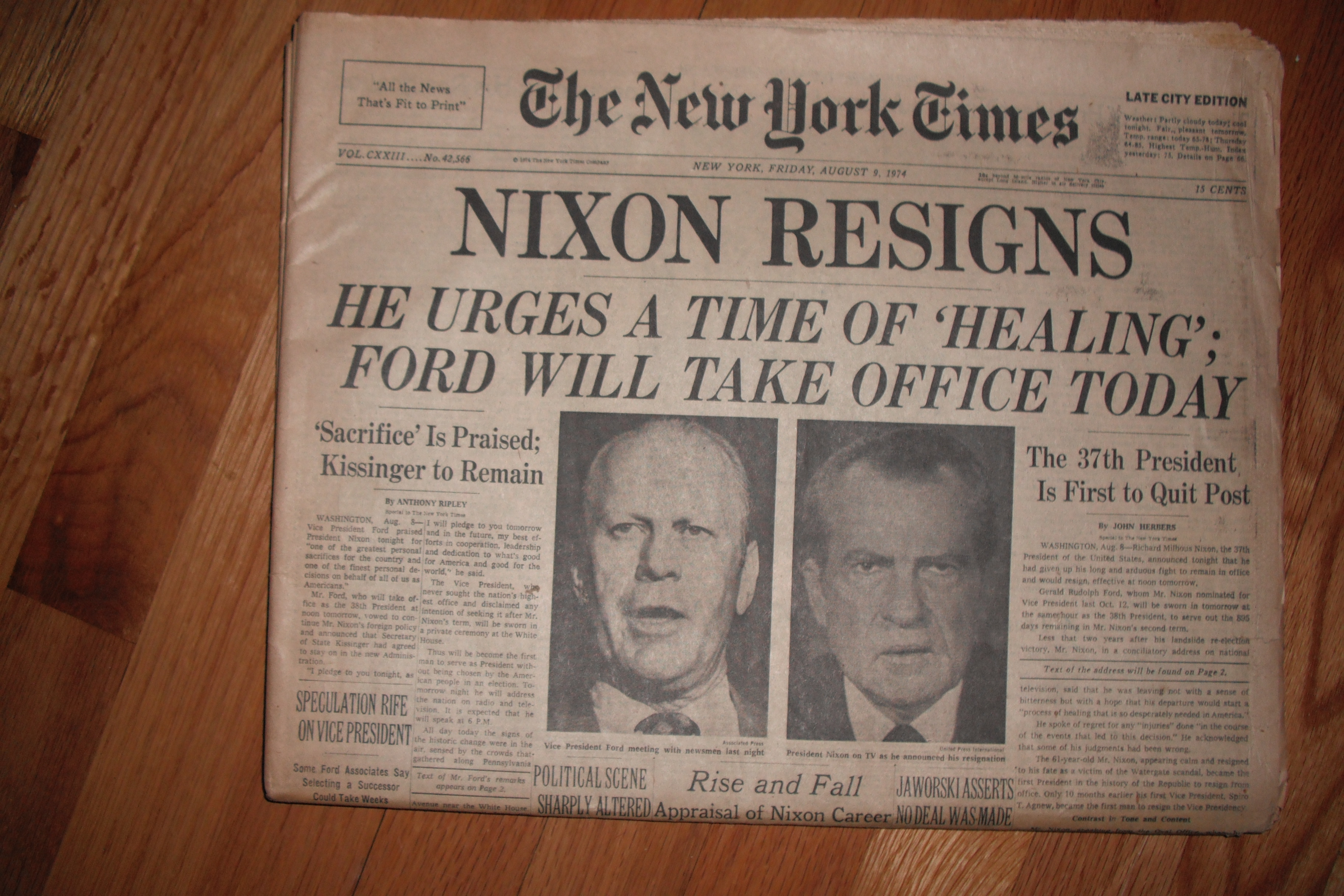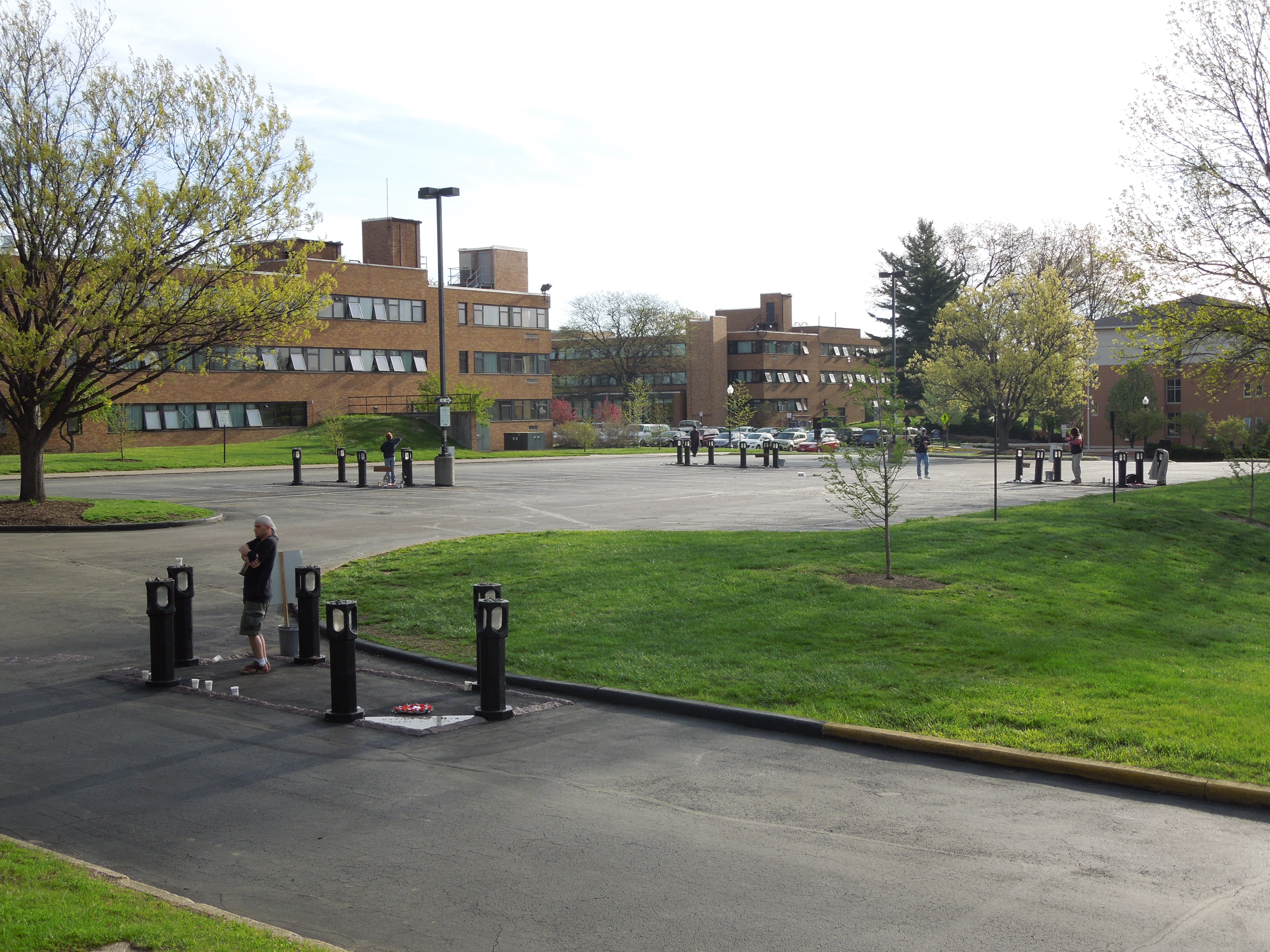Where Does Power Lie in America?: Watergate, Nixon, and the Importance of Protest
Posted by Pete on Aug 8th 2019
45 years ago today, deep in the scandalous depths of Watergate, Richard Nixon resigned as president. What drove him out of office was not elite politicking on Capitol Hill, but rather the popular and progressive power of the American people.
At the beginning of August 1974, Republican congressional leaders walked over to meet Richard Nixon at the White House.
They were bringing bad news for the President, who by that point was eyes-deep in the Watergate Scandal.
It had just come to light that, despite months of denial, Nixon had known far earlier than he’d ever admitted about the link between his White House and the infamous June 1972 break-in at the Democrats’ Washington HQ.
The congressional leaders had come to tell Nixon that it was all over – he no longer had enough Republican votes in either House to save him from a successful impeachment.
Realising the jig was up, Richard Nixon resigned exactly 45 years ago today – on August 8th 1974.
Above: The font page of the New York Times on Friday, August 9 1974
He was the first (and, still for now, the only) US president to resign in disgrace.
Protest and People Power in Nixon’s America
It’s easy to come away from the story of Nixon’s resignation with the impression of a ‘palace coup’ – that the president was brought down by a botched break-in mixed with some canny maneuvering on the Hill.
But this couldn't be further from the truth.
Far more important than the fateful meeting between Nixon and the Republican bosses was what had been going on outside the White House – on the streets of America.
Months upon months of popular protest had created the storm which blew the corrupt and increasingly despotic POTUS out of office.
Millions of Americans were sick of Nixon’s heavy-handed, gangsterish politics, and they made sure Nixon, the Press, and the world knew it.
Tensions at a Boiling Point
Despite the president's electoral success in 1968 and 1972, Nixon-era America was swept up in a multitude of defining social issues, and there were plenty of brave citizens of all stripes ready to raise their voice.
In late-June and early-July 1969, LGBT people in New York took to the streets after a police raid on the Stonewall Inn, sick of being bullied and brutalised by the state for who they were.
Native Americans were also rising up for their trampled rights. In early-1973, hundreds of Oglala Sioux had occupied the hallowed village of Wounded Knee in South Dakota, declaring its liberation from the US government.
But more than anything, the relentless agitation against America’s ongoing aggression in Vietnam pushed the Nixon White House to the edge.
Despite being carried to office in 1968 with the help of a Democratic Party divided over Lyndon Johnson’s creation and escalation of the war, Nixon if anything had worsened the hellfire in Southeast Asia.
In 1969, he secretly began bombing Cambodia as well as Vietnam and, after withdrawing most US ground troops in 1973, Nixon continued to bomb the region to try to prop up the South.
By war’s end, more bombs had been dropped on Vietnam than on Germany and Japan combined during the entire Second World War.
But the American people did not sit idly by and let Nixon carry out all this destruction without a fight.
In April 1970 a mass, peaceful protest against Nixon’s bombing campaign in Cambodia at Kent State University left four students dead and one paralysed after the National Guard fired on the crowd.
Above: The location where the Kent State victims where shot down is now memorialized on the university's campus
Nixon’s White House was, heartlessly, unmoved.
But the anti-war movement was undeterred. A year later, tens of thousands gathered in D.C. for a May Day demonstration against the conflict.
All this and more created the conditions in which a hotel break-in was able to begin Nixon's downward spiral and bring down a tainted presidency.
A Lesson for the Present
In remembering the Watergate saga, our greatest error would be to take from the story that congressmen and senators determine if and when the corrupt and irresponsible are pushed from power.
It was people power – the power of protest and resistance – that brought down Nixon, just as it brought down Johnson before him.
If not for the atmosphere of popular impatience and frustration built up and represented by years of activism, marches, and demonstrations, Watergate could’ve been little more than a mere drop in the political ocean. Instead, it grew into one of the most defining scandals in American political history.
While the 1960s and ‘70s were an especially dark period in the history of US government, when successive presidents ran roughshod over the cities and jungles of Vietnam, they were also a high tide of progressive, popular power in American politics.
Today, on behalf of all those persecuted and bullied by the Trump White House, it’s high time we bring that kind of energy back.


